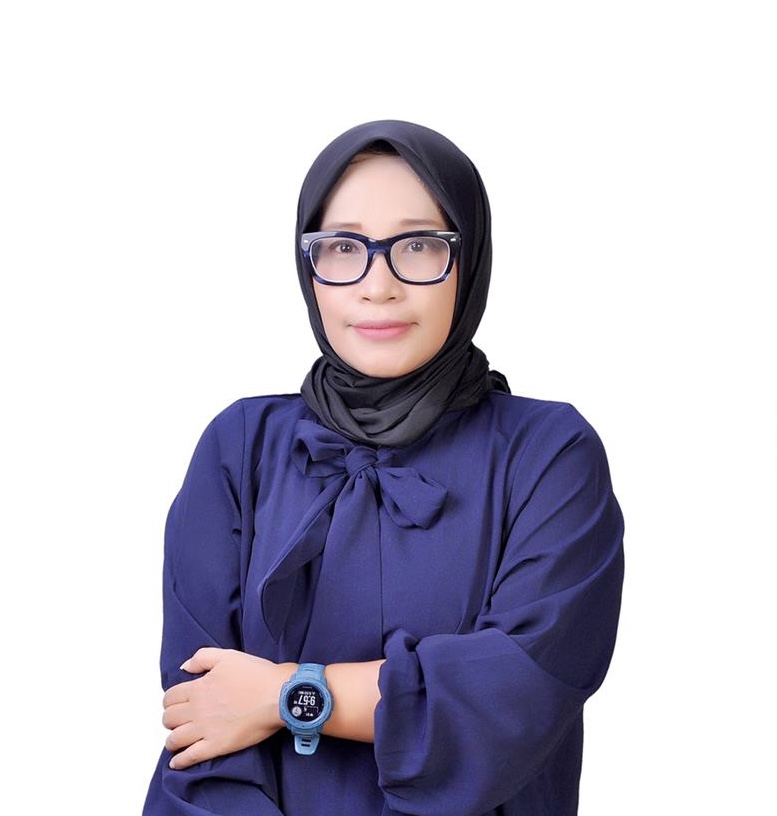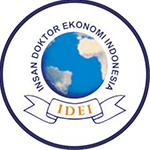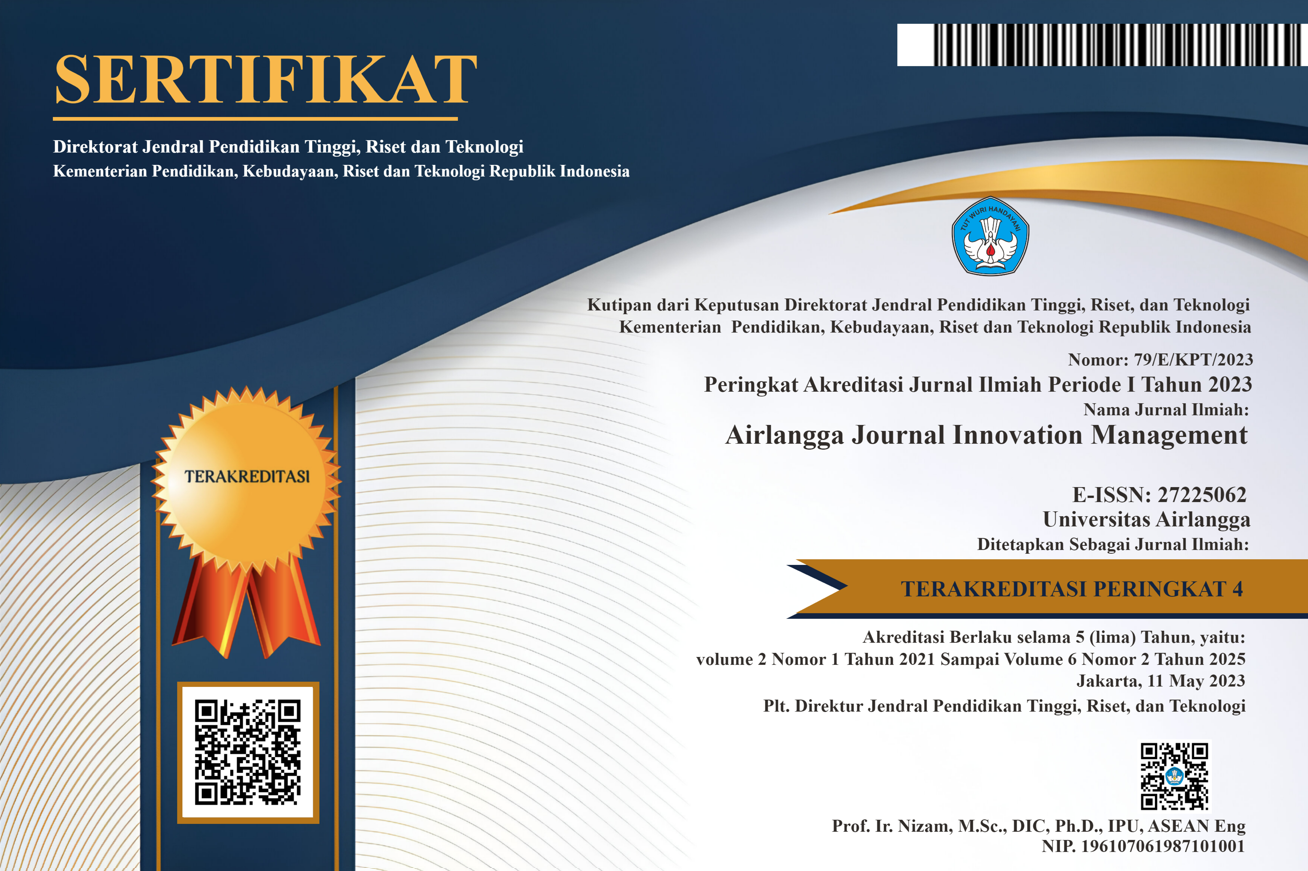Effectiveness of Indigenous Bacteria of Salt-Washing Wastewater (Bittern) As Plastic Waste Degraders
Unduhan
Plastic is a man-made synthetic polymer that has stable and durable characteristics The process of decomposing plastic takes a long time and the use of plastic which is increasing every year results in the accumulation of plastic waste in the environment, causing environmental pollution. Biodegradation is one solution to reduce the amount of plastic with the help of microorganisms or bacteria. This study has an objective to analyze the OD value; TPC; and the percentage value of plastic waste weight loss from each Indigenous bittern bacterial isolate in degrading plastic waste on YEB media + 1% glucose. The research procedure includes sterilization of tools and materials until data analysis. Data on TPC and OD values during the degradation process were analyzed descriptively and the percentage value of plastic dry weight after 7 days of incubation time was analyzed statistically. The highest OD value was 1,613 (BB1), the highest TPC value was 13,93 Log CFU/ml (BB4), and the highest plastic dry weight percentage value was 25%+0b (BB4). This research provides new insights into the potential of Indigenous bittern bacteria as plastic waste biodegradation agents and enriches knowledge in the field of environmental biotechnology. This research can be used as a basis for the waste management industry and government to design more sustainable policies in waste management to reduce dependence on conventional methods that are expensive and less effective
Abidin, N., Wahdaniar, Febrianti, N., & Syarifah, S. M. (2023). Pengurai Sampah Plastik Ramah Lingkungan. Bincang Sains Dan Teknologi, 2(02), 63–71. https://doi.org/10.56741/bst.v2i02.339
Aida, H., & Manalu, K. (2023). ISOLASI DAN IDENTIFIKASI BAKTERI PENDEGRADASI LIMBAH CAIR MINYAK KELAPA SAWIT (Elaeis guineensis Jacq). BIOEDUSAINS: Jurnal Pendidikan Biologi Dan Sains, 6(1), 47–57.
Ainiyah, D. N., & Shovitri, M. (2014). Bakteri Tanah Sampah Pendegradasi Plastik dalam Kolom Winogradsky. Jurnalo Sains Dan Seni POMITS, 3(2), 63–66.
Anggraeni, A., & Triajie, H. (2021). UJI KEMAMPUAN BAKTERI ( Pseudomonas aeruginosa) DALAM PROSES BIODEGRADASI PENCEMARAN LOGAM BERAT TIMBAL (Pb), DI PERAIRAN TIMUR KAMAL KABUPATEN BANGKALAN. Juvenil:Jurnal Ilmiah Kelautan Dan Perikanan, 2(3), 176–185. https://doi.org/10.21107/juvenil.v2i3.11754
Anuar, W., Dahliaty, A., & Jose, C. (2014). Isolasi Bakteri Selulotik Dari Perairan Dumai. Jom Fmipa, 1(2), 149–159.
Ardani, A. M., Saputri, W. D., Junaedi, A. S., & Triajie, H. (2024). Application of Indigenous Bacterial Formulation of Salt-Washing Wastewater (Bittern) in Degrading Plastic Waste. AJIM (Airlangga Journal of Innovation Management), 05(04), 705–720.
Asmi, N., Baharuddin, M., & Febryanti, A. (2022). Skrining Mikroba Pendegradasi Plastik Dari Tanah Dan Uji Biodegradasi Menggunakan Fourier Transform Infrared ( FTIR ). Al-Kauniyah: Jurnal Biologi, 15(1), 151–163.
Carbery, M., O’Connor, W., & Palanisami, T. (2018). Trophic transfer of microplastics and mixed contaminants in the marine food web and implications for human health. Environment International, 115, 400–409.
Das, A., Ray, S. K., Mohanty, M., Mohanty, J., Dey, S., & Das, A. P. (2024). Ecotoxicity of microplastic wastes and their sustainable management: A review. Environmental Chemistry and Ecotoxicology, 6, 144–152. https://doi.org/10.1016/j.enceco.2024.05.003
Fachrul, M. F., & Rinanti, A. (2018). Bioremediasi Pencemar Mikroplastik di Ekosistim Perairan Menggunakan Bakteri Indigenous (Bioremediation of Microplastic Pollutant in Aquatic Ecosystem by Indigenous Bacteria). Seminar Nasional Kota Berkelanjutan, 2015, 302–312. https://doi.org/10.25105/psnkb.v1i1.2910
Fadlilah, F. R., & Shovitri, M. (2014). Potensi Isolat Bakteri Bacillus dalam Mendegradasi Plastik dengan Metode Kolom Winogradsky. Jurnal Teknik Pomits, 3(2), 40–43.
Fatwa, E. B., Yoswaty, D., & Effendi, I. (2021). Identification of Indigenous Bacteria from Dumai Sea Waters Using 16S rRNA Method. Journal of Coastal and Ocean Sciences, 2(3), 184–188. https://doi.org/10.31258/jocos.2.3.184-188
Febriyanti, A. R., Ratnasari, R. T., & Wardhana, A. K. (2022). The Effect of Economic Growth, Agricultural Land, and Trade Openness Moderated By Population Density on Deforestation in OIC Countries. Quantitative Economics and Management Studies, 3(2).
Febriyanti, S. V., Utomo, K. P., & Sulastri, A. (2024). Analisis Bentuk Mikroplastik pada Sedimen Pantai Mangrove di Kalimantan Barat. Journal of Marine Research, 13(2), 231–238. https://doi.org/10.14710/jmr.v13i2.36714
Filayani, M. I. (2020). Uji Degradasi Plastik Polietilen Menggunakan Metode Kolom Winogradsky dengan Penambahan Lactobacillus bulgaricus dan Streptococcus thermopilus. Jurnal Lentera Bio, 9(2), 153–157.
Hasanah, N. U., & Shovitri, M. (2015). Potensi mikroorganisme air sampah mangrove untuk mendegradasi plastik hitam. Jurnal Sains Dan Seni ITS, 4(2), 45–49.
Husmayani, W. O., Zamani, N. P., Ismet, M. S., Natih, N. M. N., & Sallatu, M. A. (2024). Analisis Karakteristik Marine Debris Terhadap Persentase Tutupan Terumbu Karang di Perairan Wangi-Wangi Taman Nasional Wakatobi. Jurnal Kelautan Tropis, 27(2), 357–368.
Junaedi, A. S., Triajie, H., Chandra, H., Sari, P., & Laili, N. H. (2024). Biogas Starter Aplikasi Indigenous Air Limbah Cucian Garam Pada Substrat Kotoran Sapi Dan Tongkol Jagung Varietas Madura. BEST JOURNAL, 7(1), 807–813.
Kamsiati, E., Herawati, H., & Purwani, E. Y. (2017). Potensi Pengembangan plastikBiodegradable berbasis pati sagu dan ubi kayu di Indonesia. Jurnal Litbang Pertanian, 36(2), 67–76.
Kaseem, M., Hamad, K., & Deri, F. (2012). Thermoplastic starch blends: A review of recent works. Polymer Science - Series A, 54(2), 165–176.
Khastini, R. O., Zahranie, L. R., Rozma, R. A., & Saputri, Y. A. (2022). Review : Peranan Bakteri Pendegradasi Senyawa Pencemar Lingkungan melalui Proses Bioremediasi. Bioscientist : Jurnal Ilmiah Biologi, 10(1), 345–360. https://doi.org/10.33394/bioscientist.v10i1.4836
Leja, K., & Lewandowicz, G. (2009). Polymer Biodegradation and Biodegradable Polymers-a Review. Polish J. of Environ. Stud, 19(2), 225–226.
Lwanga, E. ., Thapa, B., Yang, X., Gertsen, H., Salánki, T., Geissen, V., & Garbeva, P. (2018). Decay of Low-Density Polyethylene by Bacteria Extracted from Earthworm’s Guts: A Potential for Soil
Restoration. Science of the Total Environment, 624, 753–757.
Mafruchati, M., Ismail, W. I. W., Wardhana, A. K., & Fauzy, M. Q. (2023). Bibliometric analysis of veterinary medicine on embryo of animals in textbook in conceptualizing disease and health. Heliyon.
Mafruchati, M., Musta’ina, S., & Wardhana, A. K. (2024). Research trends of Moringa oleifera Lam as Remedy toward Cattle’s embryo according to the frequently used words in content of papers and citations. Heliyon, 10(11).
Mafruchati, M., Othman, N. H., & Wardhana, A. K. (2023). Analysis of the Impact of Heat Stress on Embryo Development of Broiler: A Literature Review. Pharmacognosy Journal, 15(5).
Mafruchati, M., Wardhana, A. K., & Ismail, W. I. W. (2022). Disease and viruses as negative factor prohibiting the growth of broiler chicken embryo as research topic trend: a bibliometric review. F1000Research, 11(1124), 1124.
Mahjani, M., & Putri, D. H. (2020). Growth Curve of Endophyte Bacteria Andalas ( Morus macroura Miq.) B.J.T. A-6 Isolate. Serambi Biologi, 5(1), 29–32.
Malihah, L., & Nazairin, A. (2024). Sampah Plastik Sachet Dalam Perspektif Pembangunan Berkelanjutan. YUME : Journal of Management, 7(1), 198–210.
Megawati, E., Sriwidodo, & Setyabudi, I. (2021). Potential Combination of Bittern Water with Vitamin B Complex for Mineral Deficiency Therapy in Cattle: A Literature Study. Jurnal Medik Veteriner, 4(1), 137–154. https://doi.org/10.20473/jmv.vol4.iss1.2021.137-154
Melati, I. (2020). Teknik Bioremediasi: Keuntungan, Keterbatasan Dan Prospek Riset. Prosiding Seminar Biotik, Rahayu 2005, 272–286.
Mohan, S. ., & Srivastava, T. (2010). Microbial Deterioration and Degradation of Polymeric Materials. J. Biochem Tech., 2(4), 210–215.
Munfaati, P. N., Ratnasari, E., & Trimulyono, G. (2015). Aktivitas senyawa antibakteri ekstrak herba meniran (Phyllanthus niruri) terhadap pertumbuhan bakteri Shigella dysenteriae secara In Vitro. LenteraBio, 4(3), 64–71.
Mustikasari, S. D. (2021). Pengaruh kepadatan penduduk terhadap timbulan sampahmasyarakat Kecamatan Bojonegoro Kabupaten Bojonegoro tahun 2017-2020. Skripsi.
Nasution, R. S. (2015). Berbagai Cara Penanggulangan Limbah Plastik. Journal of Islamic Science and Technology, 1(1), 97–104.
Novanti, R., & Zulaika, E. (2018). Pola Pertumbuhan Bakteri Ureolitik pada Medium Calcium Carbonat Precipitation (CCP). Jurnal Sains Dan Seni, 7(2), 34–35.
Nuzula, N. I., Pratiwi, S. W. ., Indriyawati, N., & Efendy, M. (2021). STUDI PENGGUNAAN SENYAWA CaCl 2 DALAM MENURUNKAN KADAR SULFAT PADA LIMBAH PRODUKSI GARAM. Kimia Riset, 6(1), 2–7.
Octavianda, F. T., Asri, M. T., & Lisdiana, L. (2016). Potensi isolat bakteri pendegradasi kenis plastik polietilen oxo-degradable dari tanah TPA benowo surabaya. Lentera Bio : Berkala Ilmiah Biologi, 5(1), 32–35.
Pilapitiya, P. G. C. N. T., & Ratnayake, A. S. (2024). The world of plastic waste: A review. Cleaner Materials, 11. https://doi.org/10.1016/j.clema.2024.100220
Purwaningrum, P. (2016). Upaya Mengurangi Timbulan Sampah Plastik. Jurnal Teknologi Lingkungan, 8(2), 141–147.
Puspitasari, F. D., Shovitri, M., & Kuswytasari, N. D. (2012). Isolasi dan karakterisasi bakteri aerob proteolitik dari tangki septik. Jurnal Sains Dan Seni ITS, 1(1), E1–E4.
Rafi, P., & Perkasa, M. N. (2023). Dampak Kerusakan Terhadap Lingkungan Yang Disebabkan Oleh Sampah Plastik Berdasarkan Tinjauan Uu No. 18 Tahun 2008. Jurnal Multidisiplin Indonesia, 2(7), 1420–1425. https://doi.org/10.58344/jmi.v2i7.299
Respati, N. Y., Yulianti, E., & Rahmawati, A. (2017). OPTIMASI SUHU DAN pH MEDIA PERTUMBUHAN BAKTERI PELARUT FOSFAT DARI ISOLAT BAKTERI TERMOFILIK. Kingdom (The Journal of Biological Studies), 6(7), 423–430. https://doi.org/10.21831/kingdom.v6i7.7864
Rochman, C. ., Tahir, A., Williams, S. ., Baxa, D. ., Lam, R., & Miller, J. . (2016). Anthropogenic debris
in seafood: Plastic debris and fibers from textiles in fish and bivalves sold for human consumption. J. Nature, 15(32), 77–97.
Saminathan, P., Sripriya, A., Nalini, K., Sivakumar, T., & Thangapandian, V. (2014). Biodegradation of plastics by Pseudomonas putida isolated from garden soil samples. J Adv Bot Zool, 1(3), 34–38.
Sangale, M., Shahnawaz, M., & Ade, A. (2012). A Review on Biodegradation of Polythene: The Microbial Approach. J Bioremed Biodeg, 3(10), 1–9.
Setiawati, M. R., Suryatmana, P., Herdiyantoro, D., & Ilmiyati, Z. (2014). KARAKTERISTIK PERTUMBUHAN DAN WAKTU GENERASI ISOLAT Azotobacter sp. DAN BAKTERI ENDOFITIK ASAL EKOSISTEM LAHAN SAWAH. Jurnal Agroekotek, 6(1), 12–20.
Sriningsih, A., & Shovitri, M. (2015). Potensi Isolat Bakteri Pseudomonas sebagai Pendegradasi Plastik. Jurnal Sains Dan Seni ITS, 4(2), 67–69.
Surono, U. B. (2018). Berbagai Metode Konversi Sampah Plastik Menjadi Bahan Bakar Minyak. Jurnal Envirotek, 3(1), 32–40.
Suryono, D. D. (2019). Sampah Plastik di Perairan Pesisir dan Laut : Implikasi Kepada Ekosistem Pesisir Dki Jakarta. Jurnal Riset Jakarta, 12(1), 17–23. https://doi.org/10.37439/jurnaldrd.v12i1.2
Tanasupawat, M. K., Shahnawaz, M., & Ade, A. B. (2016). A Review on Biodegradation of Polythene: The Microbial Approach. J Bioremed Biodeg, 3(10), 1–9.
Wardhana, A. K., & Ratnasari, R. T. (2022). Impact of Agricultural Land and the Output of Agricultural Products Moderated with Internet Users toward the Total export of Agricultural Product in Three Islamic South East Asian Countries. Iqtishodia: Jurnal Ekonomi Syariah, 7(2), 11–20.
Yunita, M., Hendrawan, Y., & Yulianingsih, R. (2015). Analisis Kuantitatif Mikrobiologi Pada Makanan Penerbangan (Aerofood ACS) Garuda Indonesia Berdasarkan TPC (Total Plate Count) Dengan Metode Pour Plate. Jurnal Keteknikan Pertanian Tropis Dan Biosistem, 3(3), 237–248.
Zaini, N., Kasmuri, N., Mojiri, A., Kindaichi, T., & Nayono, S. E. (2024). Plastic pollution and degradation pathways: A review on the treatment technologies. Heliyon, 10(7). https://doi.org/10.1016/j.heliyon.2024.e28849
Hak Cipta (c) 2025 Airlangga Journal of Innovation Management

Artikel ini berlisensiCreative Commons Attribution-NonCommercial-ShareAlike 4.0 International License.
- The journal allows authors to hold copyright without restrictions and retain publication rights without restrictions. The author retains the copyright and grants the first publication rights to the journal, with his work simultaneously licensed under the Creative Commons Attribution-NonCommercial-ShareAlike 4.0 International License (CC BY-NC-SA). This license allows others to share the work with acknowledgment of authorship and initial publication in this journal, provided that the work is not used for commercial purposes and that any derivative works must use the same license.
- Authors may enter into additional contractual agreements for non-exclusive distribution of the journal publication version (e.g., uploading it to an institutional repository or publishing it in book form), while still including acknowledgment of the initial publication in this journal.
- Authors are allowed and encouraged to upload their work online (e.g., in an institutional repository or personal website) before and during the submission process. This can support productive scientific exchanges as well as increase citations to published works.

AJIM by UNAIR is licensed under a Creative Commons Attribution-NonCommercial-ShareAlike 4.0 International License.





















